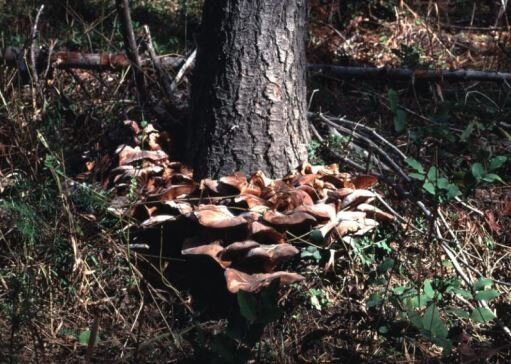Fantastic Fungi - National Mushroom Month
BY MADISON HRYSKO, GROUP FOR THE EAST END ENVIRONMENTAL ASSOCIATE
When the word ‘mushroom’ is said, what do you think of? Does it make your taste buds sweat because you think of mushrooms as delicious food? Does it make you want to pack your bags and head to Kennett Square Pennsylvania, the ‘Mushroom Capital of the World’? Or is the feeling much more mundane, as something you walk past on a hike and might take note of but don’t really know much about? September is National Mushroom Month, and I am here to tell you mushrooms are a lot cooler than you probably think.
Mushrooms or fungi are decomposers, carbon capturers, contain medicinal properties and have the ability to communicate with the organisms around them. Unlike plants, mushrooms do not photosynthesize, instead they obtain the nutrients they need to fuel their life processes from decaying plants or animals scattered across the forest floor.
The part of the mushroom you see above ground is referred to as the fruiting body. Underground, the mushroom forms a web of roots called mycelium. If you were to compare this structure to a plant, the fruiting body would be the flower and the mycelium would be the roots.
Mycelium is composed of fiber-like filaments, called hyphae, that create a thick, dense web spanning underneath the forest floor. In fact, one of the largest organisms on Earth is a species of fungus, the honey mushroom fungus (Armillaria solidipes), spanning 2.4 miles across Malheur National Forest in the Blue Mountains of Oregon.
Fruiting body of the honey mushroom fungus in Malheur National Forest. Click here for photo source.
Mycelium is extremely important to the mushroom’s survival-it is how the mushroom gains nutrition and stays connected to other organisms! I imagine this network like a highway system or like the veins in our body; efficient and interconnected. It is through this system that mushrooms are able to play their role as decomposers; consuming dead organic material that is hard for other organisms to break down and recycle these nutrients to other plants and organisms.
The mycelium spans across the forest floor in search of decaying trees, logs, or animals and sends out a digestive enzyme to break the material down. The material is then absorbed through the mycelium’s cell wall and transported back to the fruiting body where it is exchanged for simple sugars, nitrates, and phosphorus. This means that digestion is taking place outside of the fruiting body and could be taking place far from the mushroom itself!
In addition to feeding the mushroom, mycelium forms a type of communication network with other organisms across forest floors. The connection facilitates efficient cycling of nutrients and energy, ensuring the health of the ecosystem and the mushroom itself.
Close up image of Mycelium. Source: National Forest Foundation.
They may be small, but they play a large role in our environment!
I hope now you are convinced, even just slightly, that mushrooms are cooler and more important than you thought they were.
Find your fungus! This is a great time of year to hunt for fungus. The late summer humidity and rain we’ve been getting makes it an ideal environment for mushrooms.
Tag the Group on social media!
Sources:
https://ommushrooms.com/blogs/blog/what-is-mycelium
https://naturamushrooms.com/blogs/news/mycelium-mushroom-health-benefits
https://thegreentemple.net/articles/mycelium-the-future-is-fungi



